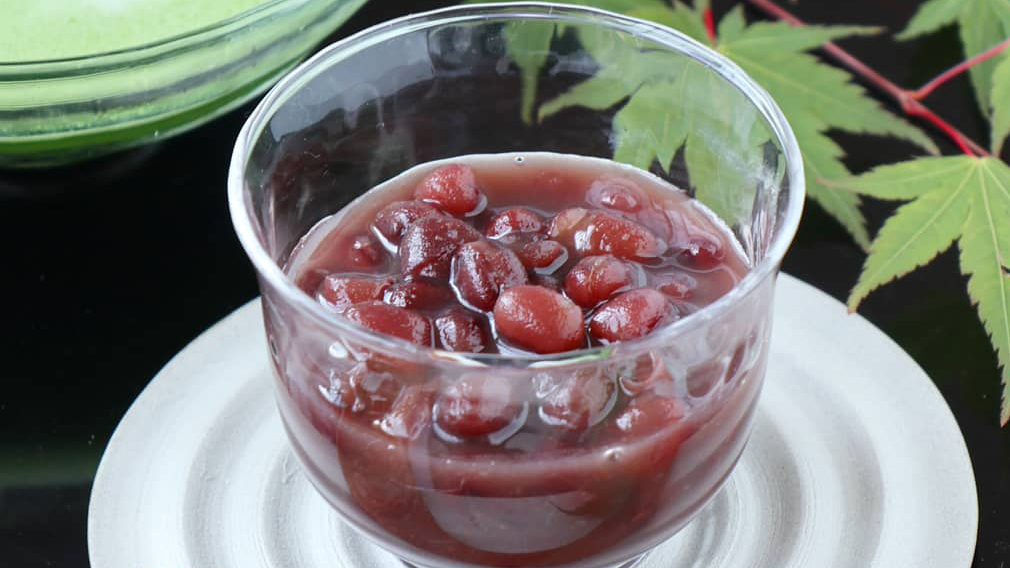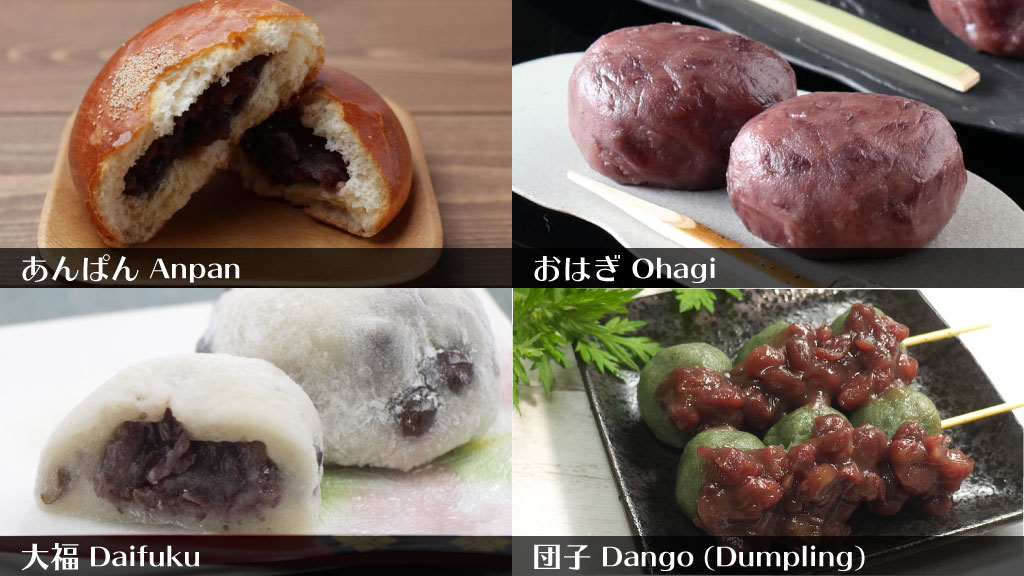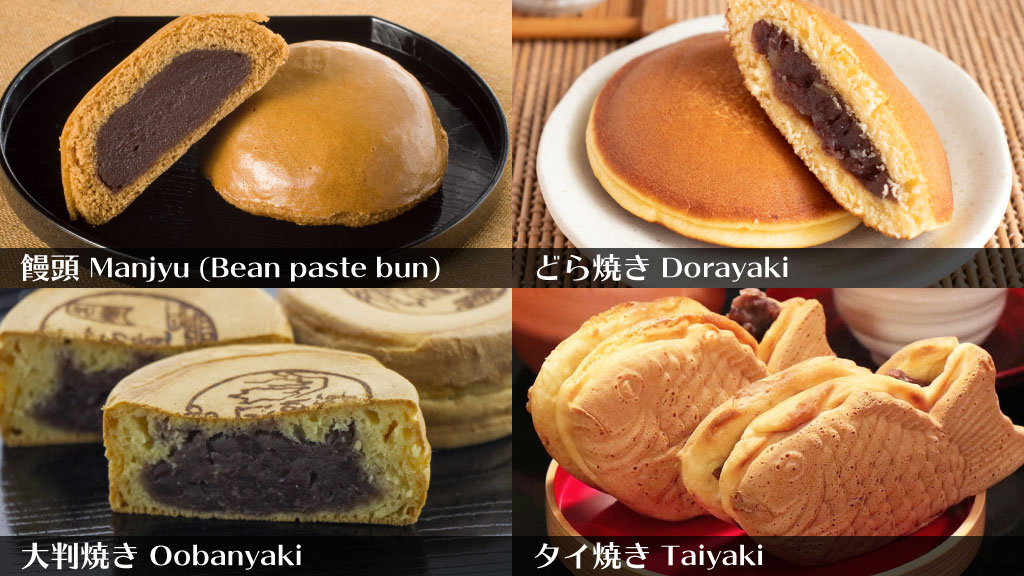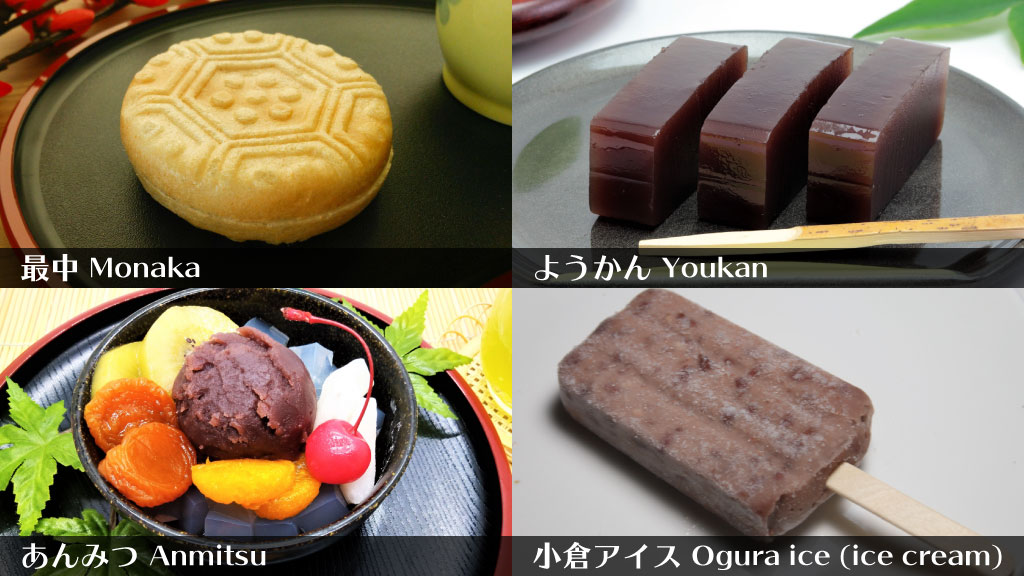Bean Paste Type is determined by “manufacturing method, raw materials, processing”!

This post is also available in 日本語
“Anko” is a Japanese traditional food. It is used not only in Japanese sweets but also in Western confectionary. It has been much favored by young to old generation because of its gentle sweetness.
Anko is a food made from boiled adzuki beans, adding sugar and kneaded, such as jam. It is also made from other kind of beans, sweet potato, and chestnuts. We show you all about “Anko” this time.
Contents
The origin of Anko
Anko is also called “An” “An” is said to have come from China more that 1,400 years ago. Those days, anything stuffed in foods made from rice and wheat were commonly called “An.” Generally, the stuffing was meat and salty. Later on, meat was replaced by adzuki beans, and then sweetened adzuki bean paste became popular in the Edo era.
Variety of Anko
Different production methods

- Tsubu-an, Tsubushi-an, Ogura-an
Tsubu-an: Adzuki beans are boiled without crushing.
Tsubushi-an: Boiled Tsubu-an beans are crushed.
Ogura-an: Large grain of adzuki beans are boiled with sugar or honey and blended with Koshi-an. - Koshi-an, Neri-an
Anko produced from boiled adzuki beans which were crushed, strained, and filtered, to move shells of beans.
Difference in raw materials
- Adzuki-an
Raw material: Adzuki bean
The most popular anko - Aka-an
Raw material: Red kidney bean or other red beans - Shiro-an
Raw material: White beans such as white kidney bean, cowpeas, and white adzuki bean
Koshi-an style is common. As it has lighter taste than Adzuki-an, it is often used to concoct with ingredients such as fruits, whipped cream or cream cheese. - Uguisu-an
Raw material: Green peas
Anko in brownish yellow green like feathers of Japanese nightingale. As the color is soft and tender it is often used for sweets depicting the spring. - Zunda-an
Raw material: Green soybeans
This anko has the color of yellowish green as the fresh young leaves. This will be served in sweet or salty taste. It is one of the local dishes in the southern Tohoku region. - Other types
Anko comes in other forms such as Koshi-an mixes with sesame seeds, green tea, or egg yolks. Anko may be made from other material as sweet potato or chestnuts than beans.
Be watchful of differences of processing status
When you purchase “anko” at stores, you have to recognize the different processing status.
- Nama-an (Raw anko)
Unsweetened boiled adzuki bean. Add sugar and knead it for use. - Sarashi-an
Powdered anko after heating Nama-an. Add water and mix sugar and knead for use. - Neri-an
Anko paste made from Nama-an or powdered anko kneaded after adding sugar.
Some typical sweets using Anko

- Anpan, Ogura toast
Baked bread with anko inside. Anko may be placed on a toast bread. - Ohagi, Botamochi
This is a steamed sticky rice cake covered with anko, shaped into Tawara-gata (barrel shape). - Daifuku
Anko stuffed in thinned rice cake. - Dango (Dumpling)
Anko placed on the dumpling made of kneaded grain powder.

- Manjyu (Bean paste bun)
Anko wrapped in a wheat dough, steamed or baked. - Dorayaki
Anko is put between two layers of kneaded and baked flour shaped like a disk. - Oobanyaki, Imagawayaki, Kaitenyaki
Anko is stuffed in a wheat dough and baked on a round iron metallic machine. - Taiyaki (Fish-shaped pancake stuffed with Anko)
Anko is stuffed in a wheat dough and baked on a metallic machine with a fish-shaped mold.

- Monaka
Anko is placed between two layers of thin wafer made from stick rice flour. - Youkan, Mizu-youkan
Anko is mixed with liquid agar kanten (vegan gelatin, extracted from water boiled seaweeds) and made solid. - Anmitsu
A Japanese sweet with sweet syrup over agar, fruits and anko. - Ogura ice (ice cream)
Anko is blended into ice cream.
Anko may be a topping of shaved ice.
- What are “Wagara (traditional Japanese patterns)”? Meaning and Prayers Accompanying the Main Japanese Patterns
- Types of Sushi and Its History
- Easily Explained. What is “Furusato Nozei”?
- Katakana words, what do they mean? “Icons, remote controls, computers…”
- [2021 | Tokyo] Four Japanese language schools recommended









